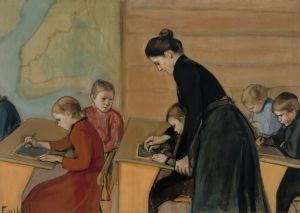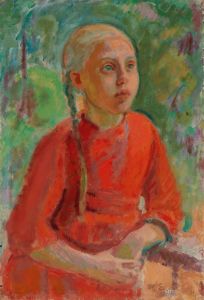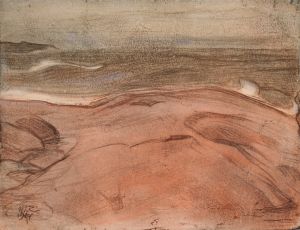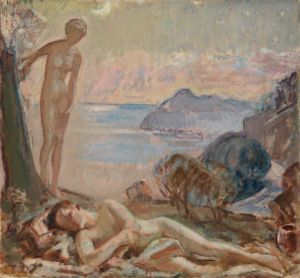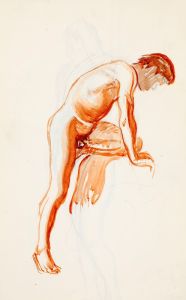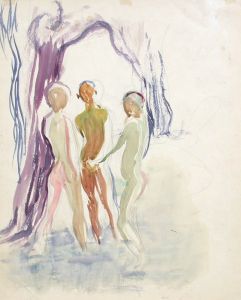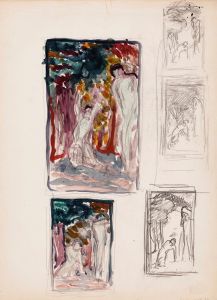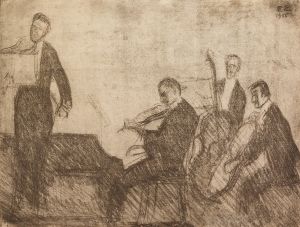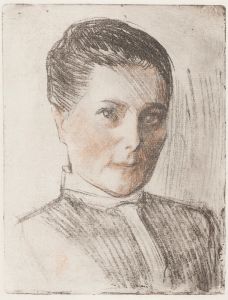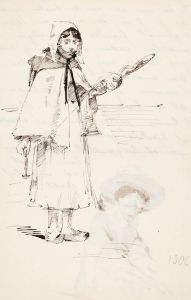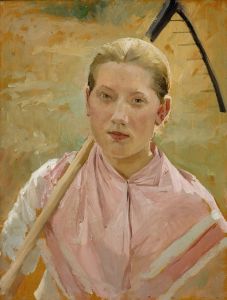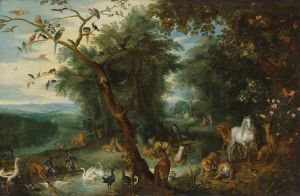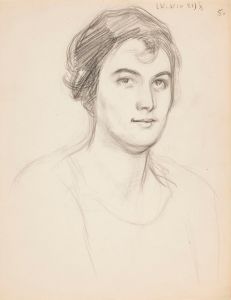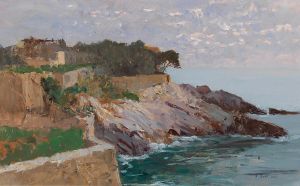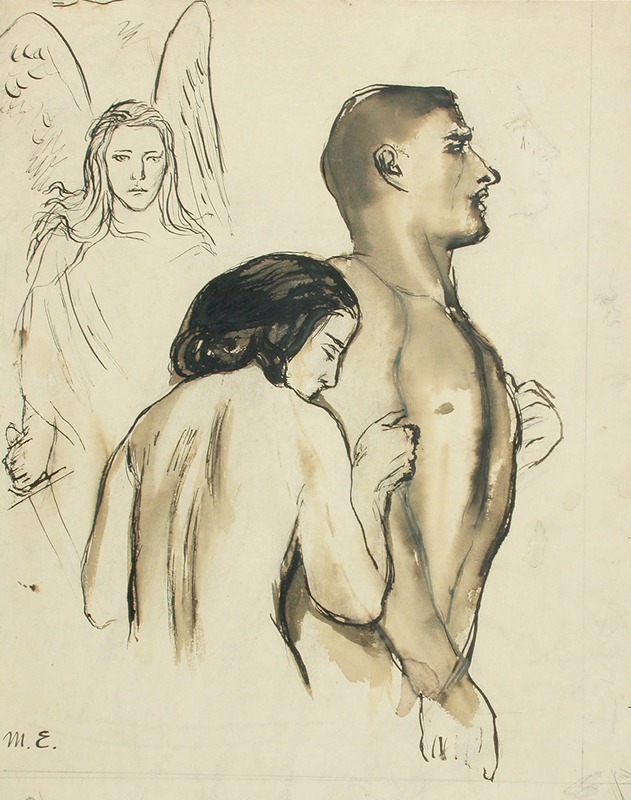
Karkoitus Paratiisista
A hand-painted replica of Magnus Enckell’s masterpiece Karkoitus Paratiisista, meticulously crafted by professional artists to capture the true essence of the original. Each piece is created with museum-quality canvas and rare mineral pigments, carefully painted by experienced artists with delicate brushstrokes and rich, layered colors to perfectly recreate the texture of the original artwork. Unlike machine-printed reproductions, this hand-painted version brings the painting to life, infused with the artist’s emotions and skill in every stroke. Whether for personal collection or home decoration, it instantly elevates the artistic atmosphere of any space.
Magnus Enckell's painting Karkoitus Paratiisista (translated as Expulsion from Paradise) is a notable work by the Finnish symbolist painter. Created in 1919, the painting reflects Enckell's interest in themes of human emotion, mythology, and existential questions, which were central to his artistic output during the early 20th century. Enckell was a leading figure in Finnish art and a prominent member of the Symbolist movement, which sought to explore deeper spiritual and emotional truths through evocative and often dreamlike imagery.
Karkoitus Paratiisista depicts the biblical story of Adam and Eve being expelled from the Garden of Eden, a theme that has been a recurring subject in Western art history. Enckell's interpretation of this moment is characterized by a restrained and contemplative mood, rather than dramatic or overtly emotional expression. The painting features a subdued color palette, with soft tones that emphasize the melancholic atmosphere of the scene. The figures of Adam and Eve are rendered with a sense of vulnerability and introspection, highlighting their humanity and the gravity of their expulsion.
Enckell's style in this work reflects his transition from earlier, more vibrant and decorative compositions to a more subdued and introspective approach. This shift aligns with broader trends in European art during the post-World War I period, as artists grappled with the emotional and societal aftermath of the conflict. Enckell's focus on the human form and his use of light and shadow to convey mood are hallmarks of his mature style.
The painting is considered an important example of Enckell's contribution to Finnish art and his ability to blend Symbolist ideals with a distinctly Nordic sensibility. It is housed in the Ateneum Art Museum in Helsinki, Finland, which holds a significant collection of Finnish art from the 19th and early 20th centuries. The museum's collection provides context for understanding Enckell's work within the broader framework of Finnish national identity and cultural history.
Magnus Enckell (1870–1925) was a central figure in the Golden Age of Finnish art, and his works continue to be celebrated for their exploration of universal themes and their contribution to the development of modern art in Finland. Karkoitus Paratiisista remains a testament to his skill as a painter and his ability to convey profound emotional and spiritual experiences through his art.





